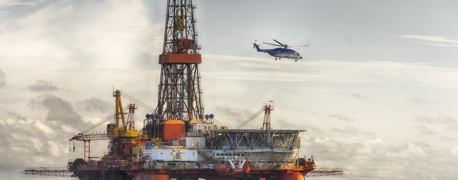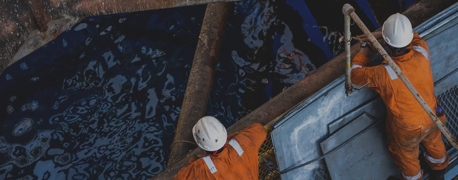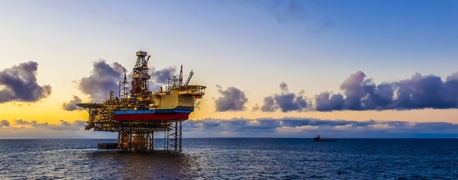The Hidden Danger of Explosive Decompression in Commercial Diving Work

Explosive decompression is one of the most catastrophic hazards maritime workers can face—and one of the most preventable. When pressure systems fail offshore, the consequences are instant, violent, and often fatal. Commercial divers, saturation teams, and offshore crews operate under these risks every day. They trust that their equipment will protect them. When that trust is broken, the outcome is almost always devastating.
These aren’t freak accidents. They are the result of failures that could have been prevented.
What Is Explosive Decompression?
Explosive decompression happens when pressure is lost so rapidly that the body cannot adjust. In less than half a second, trapped gases in the lungs, ears, and other tissues can cause catastrophic injury. The public often associates these events with airplane incidents, like passengers being "sucked" from a plane during cabin failure. But underwater, the pressure is far more severe.
At sea level, air pressure is 1 atmosphere. At 36,000 feet in the air, it's about 0.2 atmospheres. But in just 26 feet of water, pressure reaches 1.8 atmospheres. Commercial diving operations often take place under pressure 8 to 10 times higher than sea level—meaning the dangers of sudden decompression offshore are exponentially more lethal.
The Role of Commercial Divers in Offshore Rig Maintenance
Offshore oil and gas production depends on commercial divers to inspect, maintain, and repair underwater infrastructure. According to OceanCorp, commercial divers work in extreme conditions to ensure the integrity of blowout preventers, risers, pipelines, and other critical equipment. They conduct hyperbaric welding, perform emergency repairs, and maintain the subsea systems that keep rigs productive and safe.
These tasks require saturation diving systems, diving bells, and hyperbaric chambers, which are pressurized environments that must be perfectly sealed and carefully managed. If those pressure systems fail, divers have no margin for error.
Real-Life Example of Diving Risks: The Survival of Chris Lemons
The story of commercial diver Chris Lemons shows just how thin that safety margin can be. In 2012, Lemons was conducting a saturation dive in the North Sea when his umbilical cord—his lifeline—was severed during a storm. Cut off from his diving bell’s life support, he was left with just five minutes of emergency air.
It took his team more than 30 minutes to recover him. Against all odds, he survived. His case is miraculous. Most are not.
How Explosive Decompression Happens in Maritime Settings
The most infamous maritime decompression accident occurred on November 5, 1983, aboard the Byford Dolphin drilling rig. During a routine transfer between a diving bell and a pressurized chamber, a mechanical clamp on the connecting trunk failed. At the time, the compartment was pressurized to 9 atmospheres. To put that into perspective, that's more than 130 pounds of pressure on every square inch of the body—roughly equivalent to stacking four compact cars on top of a single sheet of paper. Only instead of pressing inward, that pressure was pressing outward. The human body is unable to handle such a dramatic pressure release at that speed.
The sudden pressure drop was violent. It blew the diving bell away from the rig. Four saturation divers were killed instantly. A fifth worker, standing outside the chamber, was struck by the blast and later died. A diver just inside the breach suffered fatal injuries from the rapid suction pressure.
Are Incidents Like Byford Dolphin Still Possible Today?
The Byford Dolphin tragedy forced the offshore industry to confront how vulnerable divers are when safety systems fail. Today, significant advancements have been made in diving system design to prevent the same type of catastrophic failure.
Modern saturation diving systems now use interlocking hatches and pressure-sequenced locking mechanisms that make it mechanically impossible to open a diving bell or trunk while under pressure. These fail-safes did not exist on the Byford Dolphin, which relied on manual clamps that could accidentally disengage.
Today’s diving systems also feature redundant alarms, improved pressure monitoring, automated safety interlocks, and crew training protocols that specifically address explosive decompression scenarios. Organizations like the International Marine Contractors Association (IMCA) and the Association of Diving Contractors International (ADCI) have been instrumental in advancing these standards. Both groups set strict safety guidelines, certify commercial diving systems, and push for continual safety improvements to protect maritime workers.
However, no system is truly immune from risk. Equipment must still be properly maintained, inspections must be enforced, and divers must be protected from employers willing to take shortcuts. As long as companies continue to weigh profit against safety, the potential for disaster remains. When safety protocols are treated as optional, workers bear the risk, and they deserve better.
The Human Cost: Catastrophic Injuries from Explosive Decompression
The injuries caused by explosive decompression at ocean depths are not survivable. These include:
- Lung rupture and pulmonary barotrauma
- Severe blunt-force trauma from ejected equipment
- Air and fat embolisms that block vital blood flow
- Widespread tissue damage due to violent air movement
Survivors may face permanent lung damage, hearing loss, traumatic brain injury, and long-term psychological trauma like PTSD and claustrophobia. In other words, these are long-term injuries.
Why These Catastrophes Are Preventable
The tragedy was not a random event; it was the result of systemic neglect that spanned years. The diving system's lack of modern fail-safes made it a ticking time bomb. At the time, diving technology was rapidly advancing, but the Byford Dolphin continued to rely on equipment that should have been phased out. Regulators had flagged the potential dangers, but those warnings were ignored or deprioritized. The operators continued to use aging infrastructure while pushing divers into some of the most extreme and unforgiving environments on the planet. Companies banked on the idea that as long as the system appeared functional, deeper safety upgrades could wait.
As we now know, preventing explosive decompression requires:
- Proper fail-safe clamp designs
- Interlocking pressure gates that cannot open accidentally
- Redundant safety alarms and gauges
- Regular inspection and maintenance
- Crew training that meets modern standards
It also requires a company culture that sees safety not as a checkbox, but as a daily, uncompromising priority. When companies cut corners or accept equipment that "usually works," preventable dangers become inevitable—and workers pay the price.
Byford Dolphin Families Seek Justice for Loved Ones
When explosive decompression occurs, multiple parties may be responsible: equipment manufacturers, rig owners, diving contractors, and supervising engineers. The families of the Byford Dolphin victims endured decades of grief and legal battles before anyone answered for what happened—justice that was delayed, but deeply necessary.
Investigations and subsequent civil claims exposed safety failures and forced companies to confront the human cost of poor design, rushed maintenance, and inadequate protocols.
Conclusion
Explosive decompression isn’t a distant aviation problem. It’s a present danger in offshore drilling, commercial diving, and maritime maintenance. And it’s preventable.
Commercial divers face extreme risks every time they enter a pressurized environment. They deserve equipment that won’t fail them; more importantly, they deserve companies that put safety first.


